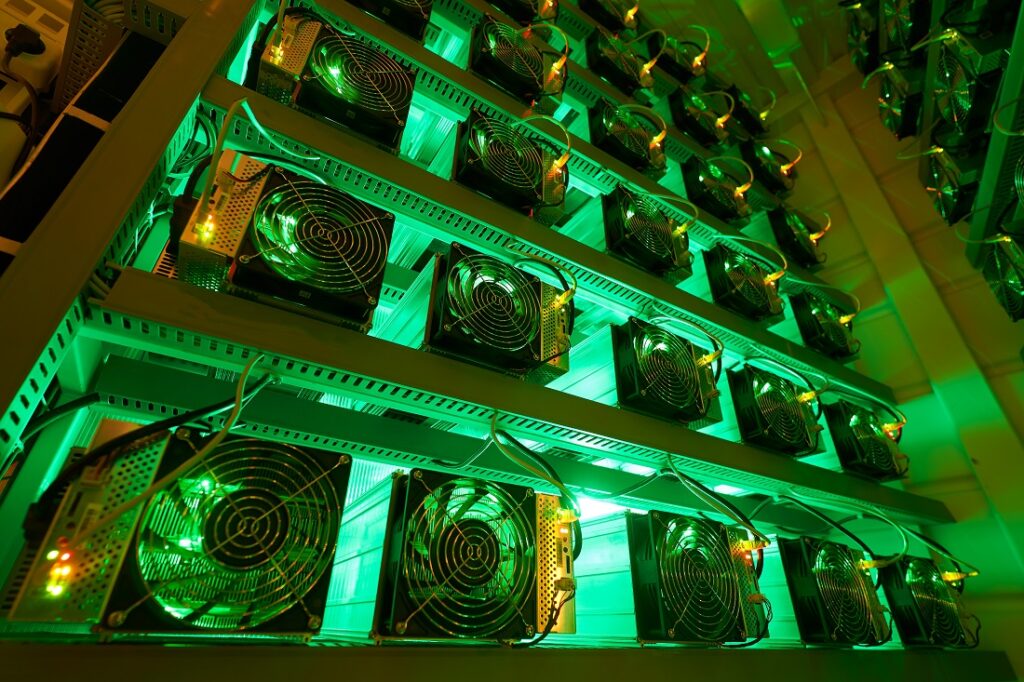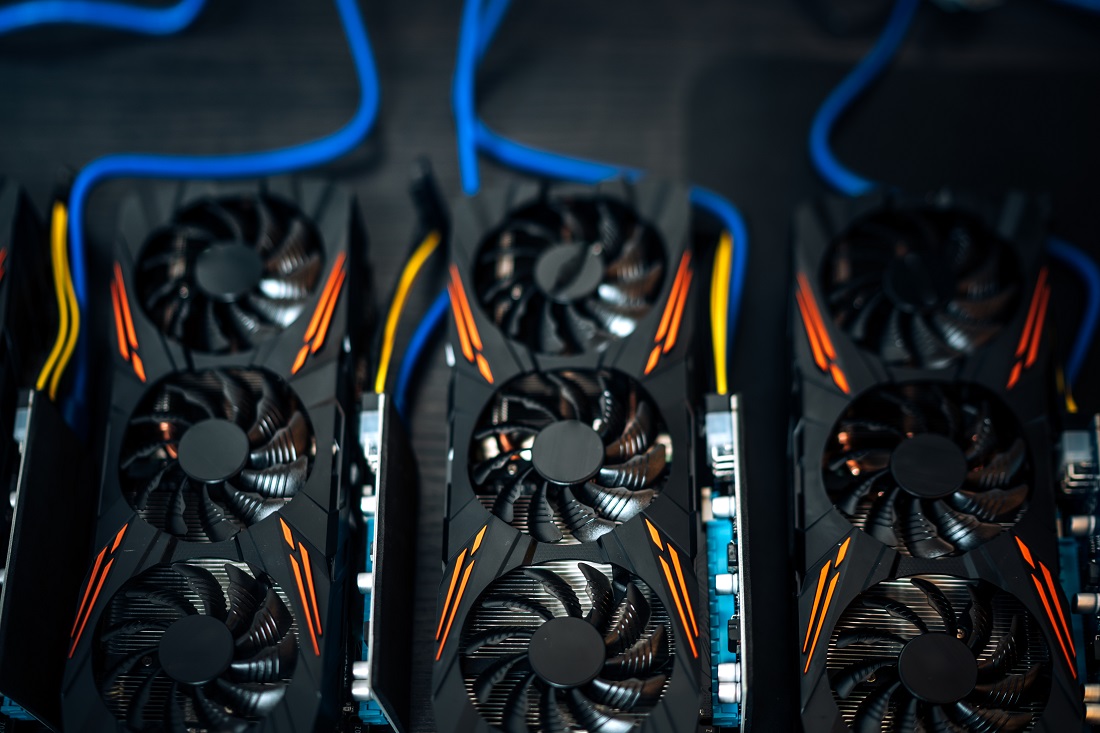In the ever-evolving world of cryptocurrency, GPU mining has been a cornerstone. But is GPU mining dead? This question has been echoing in the crypto community, stirring debates and discussions. In this article, we delve into the importance of GPU mining, its history, current state, and future prospects.
What is GPU Mining?
GPU mining, or Graphics Processing Unit mining, is a method of cryptocurrency mining that utilizes a computer’s graphics processing unit to solve complex algorithms. It has been a popular choice for miners due to its efficiency and affordability.
The Rise of GPU Mining in the Crypto World
GPU mining gained prominence with the advent of Bitcoin. As cryptocurrencies grew in popularity, so did the demand for efficient mining methods, leading to the rise of GPU mining.
The Current State of GPU Mining
As we navigate through the ever-evolving landscape of cryptocurrency, the state of GPU mining is a topic of significant interest. Despite the challenges it has faced, GPU mining continues to hold a place in the crypto world, albeit in a different capacity than before. The current state of GPU mining is shaped by various factors, including market dynamics, technological advancements, and regulatory policies.
Major Players in the GPU Mining Industry
The GPU mining industry is primarily dominated by two major players: Nvidia and AMD. Nvidia, with its latest 4000 series, and AMD, with its RX 6000 series, have been at the forefront of providing powerful GPUs for various computing needs. However, the demand dynamics have shifted recently. With mining becoming less profitable, the demand for GPUs from miners has decreased significantly. This shift has led to a surplus of supply, making GPUs more affordable and readily available for gamers and other users.
Current Trends and Developments
One of the most notable trends in the GPU mining space is the continuous development of more efficient and powerful GPUs. Despite the decline in demand from miners, manufacturers like Nvidia and AMD continue to innovate, pushing the boundaries of GPU capabilities.
Another trend is the shift in the profitability of GPU mining. With the increasing difficulty of mining and the fluctuation in cryptocurrency prices, GPU mining has become less profitable. This shift has led to a decrease in demand for GPUs for mining purposes, resulting in lower prices and better availability for other users.
Furthermore, the rise of Ethereum mining that once led to a surge in GPU demand has also seen a downturn. As Ethereum moved to Proof of Stake (PoS) with Ethereum 2.0, the demand for GPUs for Ethereum mining is expected to decrease further.
In conclusion, the current state of GPU mining is in flux. With mining becoming less profitable, the demand for GPUs for mining has decreased. However, GPUs remain an essential component for various computing needs, and manufacturers continue to innovate, ensuring the GPU market remains dynamic and vibrant.
Challenges Facing GPU Mining
GPU mining, while once a profitable venture, is currently facing a multitude of challenges. These challenges span across technological, economic, and regulatory domains, each contributing to the shifting dynamics of the GPU mining landscape.
Technological Challenges
One of the primary technological challenges facing GPU mining is the increasing difficulty of mining algorithms. As more miners join the network, the difficulty of solving the cryptographic puzzles increases. This means that miners need more powerful hardware and more energy to mine the same amount of cryptocurrency. This escalating difficulty makes mining less profitable over time, especially for miners with less powerful equipment.
Another technological challenge is the shift towards more energy-efficient consensus mechanisms, such as Proof of Stake (PoS). Ethereum, one of the most popular cryptocurrencies for GPU mining, moved to PoS already.
Economic Challenges
The profitability of GPU mining is heavily influenced by the prices of cryptocurrencies. The recent volatility in the crypto market has made GPU mining less predictable and, in many cases, less profitable. When the prices of cryptocurrencies fall, miners may find that the cost of running their crypto mining rigs exceeds the value of the mined coins.
Additionally, the initial investment required for GPU mining can be substantial. Miners need to purchase not only the GPUs but also other components like a suitable power supply, cooling system, and more. With the decline in profitability, recouping this initial investment has become more challenging.
Regulatory Challenges
Regulatory challenges also pose a significant threat to GPU mining. Many governments around the world are imposing stricter regulations on cryptocurrency mining due to concerns about energy consumption and environmental impact. These regulations can make it more difficult and costly to operate a mining rig, further reducing the profitability of GPU mining.
In some cases, governments have outright banned cryptocurrency mining. For instance, China, once home to a large portion of the world’s crypto miners, has recently banned all forms of cryptocurrency mining. This ban has forced many miners to shut down their operations or relocate to other countries, adding to the challenges of GPU mining.
In conclusion, the challenges facing GPU mining are multifaceted and significant. The combination of increasing mining difficulty, declining profitability, and stricter regulations has led many to question the future of GPU mining. However, it’s important to note that the landscape of cryptocurrency is constantly evolving, and new opportunities may arise even as old ones become less viable.
Is GPU Mining Really Dead?
The question “Is GPU mining really dead?” is one that has been circulating in the cryptocurrency community for some time now. The answer, however, is not as straightforward as it might seem. While it’s true that GPU mining faces significant challenges, it’s also true that the landscape of cryptocurrency is constantly evolving, and with it, the role of GPU mining.
The Argument Against the Death of GPU Mining
Despite the challenges, there are reasons to believe that GPU mining is not entirely dead. For one, not all cryptocurrencies are moving towards Proof of Stake (PoS) or other mining-alternative consensus mechanisms. There are still a number of cryptocurrencies that rely on Proof of Work (PoW) like CFX, ERG, NEXA, the consensus mechanism that GPU mining supports.
Furthermore, the development of more powerful and efficient GPUs continues. These advancements could potentially offset the increasing difficulty of mining algorithms, making GPU mining viable for certain cryptocurrencies.
Lastly, the versatility of GPUs could also play a role in keeping GPU mining alive. Unlike ASIC miners, which are designed to mine a specific algorithm, GPUs are capable of mining different types of cryptocurrencies. This versatility allows GPU miners to switch to different cryptocurrencies if mining one becomes unprofitable.
The Argument For the Death of GPU Mining
On the other hand, there are compelling arguments for the death of GPU mining. The increasing difficulty of mining algorithms and the shift towards more energy-efficient consensus mechanisms, such as PoS, are making GPU mining less profitable and, in some cases, obsolete.
Additionally, the regulatory challenges facing GPU mining cannot be ignored. Stricter regulations and bans on cryptocurrency mining in certain countries are making it more difficult and less profitable to operate a GPU mining rig.
Possible Alternatives to GPU Mining
As the profitability and viability of GPU mining continue to be challenged, it’s worth exploring the possible alternatives to GPU mining. These alternatives span across different types of hardware and consensus mechanisms, each with their own advantages and disadvantages.
ASIC Mining

Application-Specific Integrated Circuits (ASICs) are custom chips designed for a specific purpose – in this case, mining a specific cryptocurrency. ASIC miners are much more efficient than GPUs in terms of power consumption and hashing speed. However, they are also more expensive and less versatile, as they can only mine a specific type of cryptocurrency. Furthermore, the development of ASIC-resistant algorithms by some cryptocurrencies has limited the use of ASIC miners. And recently, the well-known GPU cryptocurrency, Kaspa, began to be mined using ASICs.
FPGA Mining
Field-Programmable Gate Arrays (FPGAs) are integrated circuits that can be programmed to perform a specific task. In terms of mining, FPGAs offer a middle ground between GPUs and ASICs. They are more efficient than GPUs but less powerful than ASICs. However, they are also more versatile than ASICs, as they can be reprogrammed to mine different types of cryptocurrencies. The main drawback of FPGA mining is the high cost of FPGA devices and the technical knowledge required to program them.
Proof of Stake (PoS) and Other Consensus Mechanisms
With the increasing popularity of energy-efficient consensus mechanisms like Proof of Stake (PoS), staking has become a viable alternative to traditional mining. In PoS-based cryptocurrencies, validators are chosen to create a new block based on the number of coins they hold and are willing to “stake” as collateral. While staking requires a significant investment in the cryptocurrency, it eliminates the need for expensive mining hardware and high energy costs.
The Future of GPU Mining
The future of GPU mining is a topic of intense debate within the cryptocurrency community. While the challenges facing GPU mining are significant, there are also potential developments and trends that could shape its future.
Predictions for the Future of GPU Mining
Despite the current challenges, there are reasons to believe that GPU mining could continue to have a role in the future of cryptocurrency. One of the key factors that will shape the future of GPU mining is the development of GPU technology. Manufacturers like Nvidia and AMD continue to innovate, developing more powerful and efficient GPUs. These advancements could potentially offset the increasing difficulty of mining algorithms, making GPU mining viable for certain cryptocurrencies.
Furthermore, not all cryptocurrencies are moving towards Proof of Stake (PoS) or other mining-alternative consensus mechanisms. There are still a number of cryptocurrencies that rely on Proof of Work (PoW), the consensus mechanism that GPU mining supports. As long as these cryptocurrencies exist and remain profitable to mine, there will be a role for GPU mining.
Potential Innovations and Developments in GPU Mining
In terms of potential innovations, one area to watch is the development of more energy-efficient GPUs. As concerns about the environmental impact of cryptocurrency mining grow, there is increasing demand for more energy-efficient mining hardware. If manufacturers can develop GPUs that consume less power while still providing a high hash rate, it could help to make GPU mining more viable and sustainable in the future.
Another potential development is the emergence of new, GPU-mineable cryptocurrencies. The cryptocurrency landscape is constantly evolving, with new cryptocurrencies being launched on a regular basis. If these new cryptocurrencies can be mined profitably with GPUs, it could help to keep GPU mining relevant.
Conclusion
The question, “Is GPU mining dead?” is one that requires careful consideration. While there are challenges facing GPU mining, it continues to evolve and adapt. The future of GPU mining may not be as bleak as some suggest. As we’ve explored in this article, GPU mining is not just about its current state, but also about its potential for future growth and innovation.


